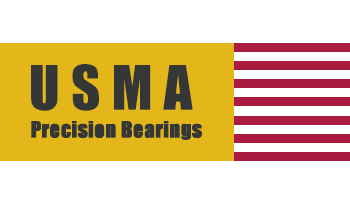NEWS
DEVELOP BY TECHNOLOGY,SURVIVE BY QUALITY
USMA Bearings Industry Navigates Tariff Storm and Market Shifts Amid Global Economic Pressures
Views: 0 Author: Site Editor Publish Time: 2025-06-18 Origin: Site











USMA Bearings Industry Navigates Tariff Storm and Market Shifts Amid Global Economic Pressures
Global bearings manufacturers face unprecedented supply chain disruption as U.S. steel and aluminum tariffs doubled to 50% in June 2025 – a move that has sent shockwaves through industrial sectors and forced American bearing companies to accelerate strategic pivots in production and sourcing. The tariff escalation compounds existing pressures from a separate 25% duty on imported automobile parts implemented last April, creating what industry leaders describe as the most challenging trade environment in decades
Escalating Costs & Supply Chain Realignment
Material Cost Surge: Steel-intensive MRO coponents, including critical bearing hardware, have seen 45-65% price increases, with replacement parts for heavy equipment jumping 40-60%. Industry analysts estimate these tariffs add approximately $300 to the cost of every automobile manufactured in the U.S.
Inventory Stockpiling: Panic buying has inflated procurement lead times by 40-60% for critical components, with premium pricing of 20-35% for expedited deliveries straining cash flows
Market Growth Amidst Challenges
Despite headwinds, the global bearings market shows robust expansion, driven by electrification and industrial automation:
Automotive Dominance: The automotive hub bearing market, valued at $9.66B in 2024, is projected to reach $16.03B by 2033 (5.79% CAGR). Passenger vehicles drive 65% of demand, with commercial vehicles at 35%
EV Acceleration: Electric and hybrid vehicles, now constituting 35% of global new vehicle production, require specialized high-precision bearings. This segment fuels 40% of market growth
Regional Shifts: Asia-Pacific commands 50% of the global bearings market, while North America holds 20%—bolstered by aerospace and defense sectors where companies like USMA Bearings excel
U.S. Strategic Responses: Innovation & Regionalization
American bearing firms are countering challenges through technology investments and supply chain redesign:
Localized Production: "Regional manufacturing hubs + localized production" models are replacing export dependency. renewable energy transition—securing 100% renewable electricity for U.S./Canada facilities—simultaneously cuts costs and aligns with decarbonization goals
Product Innovation: Advanced materials like ceramic hybrids (15% market penetration) and sensor-integrated bearings are becoming critical differentiators, enhancing durability and predictive maintenance capabilities
Emerging Opportunities & Long-Term Outlook
Aftermarket Strength: Accounting for 30% of global bearing demand, replacement cycles for aging vehicle fleets offer stable growth, particularly in North America and Europe
New Markets: Southeast Asia, Eastern Europe, and MENA regions present untapped potential, with commercial vehicles driving 55% of bearing demand in the Middle East and Africa
Competitive Repositioning: U.S. manufacturers are shifting from "cost-dependent exports" to a "technology-brand dual-driven" global model, targeting high-value segments like robotics bearings for welding and assembly automation

